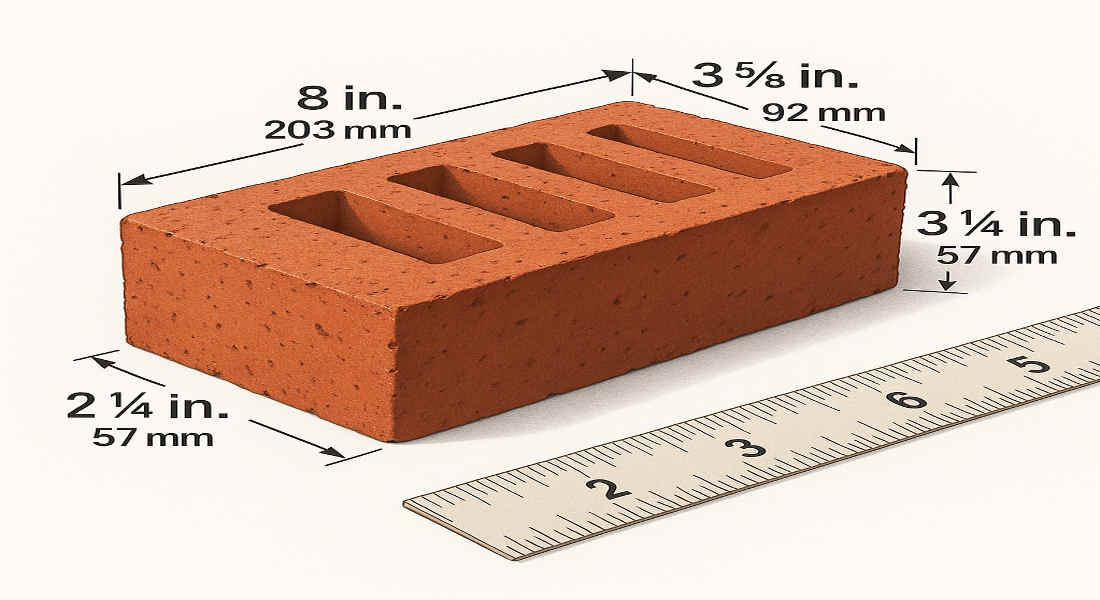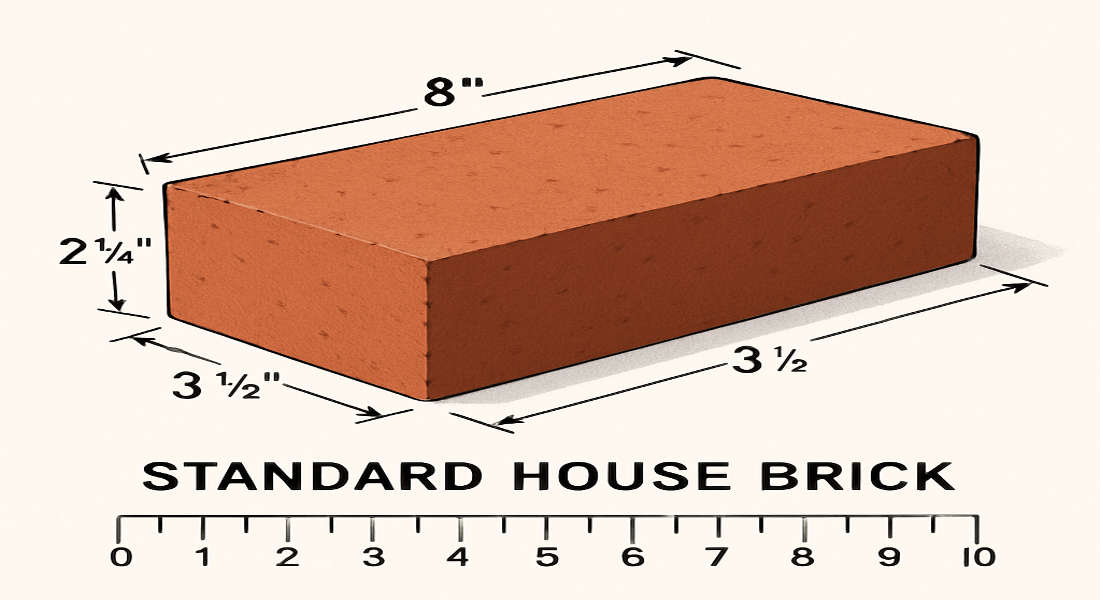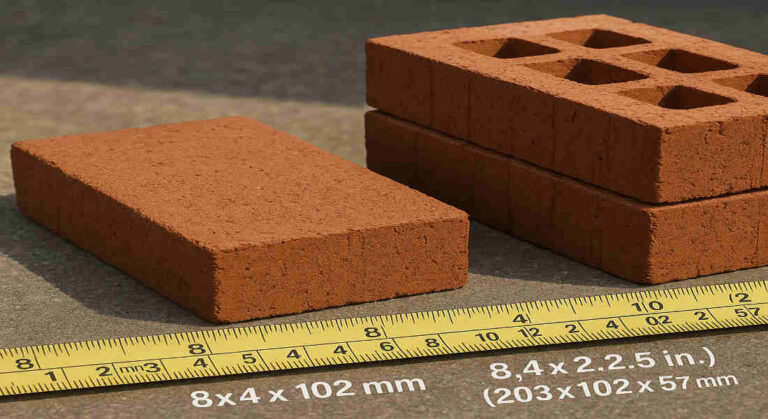House bricks come in a variety of standard sizes that differ by region but generally follow specific dimensions to ensure ease of construction, structural integrity, and aesthetic consistency. In the UK, the most common standard house brick measures 215 mm x 102.5 mm x 65 mm, with a nominal size including mortar joints of 225 mm x 112.5 mm x 75 mm. In the United States, a typical standard brick size is approximately 194 mm x 92 mm x 57 mm (7.625″ x 3.625″ x 2.25″), often referred to as modular bricks. Australian standard face bricks commonly measure about 230 mm x 110 mm x 76 mm. These standard sizes facilitate efficient planning, estimating materials, and laying bricks across various construction projects worldwide.
Explanation of House Bricks
House bricks are fundamental materials used in construction, primarily made from clay or concrete. They’re molded and fired at high temperatures to create a strong, durable building block.
These bricks come in a variety of textures and colors, allowing homeowners to express their style. From rustic reds to sleek grays, the options are vast.
Bricks offer remarkable thermal properties. They help regulate indoor temperatures by absorbing heat during the day and releasing it at night.
This quality enhances safety for homeowners while contributing to a structure’s longevity.
Their versatility also makes them suitable for various applications—whether it’s walls, patios, or chimneys. House bricks remain a popular choice due to their timeless appeal and practical benefits in modern architecture.
Common Sizes for Standard House Bricks
When it comes to house bricks, standard sizes play a crucial role in the construction process. The most common dimensions are 7.5 x 3.5 x 2.25 inches, often referred to as the modular brick size.
This site has been a staple in traditional builds for decades.
In addition to these, there are also thinner bricks known as “brick slips,” which can be around half an inch thick but maintain the same length and height as standard bricks.
These variations allow builders flexibility while ensuring structural integrity and aesthetic appeal in any project they undertake. Choosing the right size has a significant impact on the overall design and functionality within a space.
You may also read (can you safely use builders sand in your home garden).
Factors to Consider When Choosing Brick Sizes
When selecting brick sizes, several factors come into play. First, consider the wall thickness you need. Thicker walls often require larger bricks for structural integrity.
Next, think about insulation and energy efficiency. Different sizes can affect thermal performance, impacting your home’s comfort levels and energy costs.
The aesthetic appeal is crucial, too. Larger bricks create a bold look, while smaller ones provide intricate detailing. This choice can significantly influence your building’s overall design.
Don’t overlook the local climate, either. In areas prone to extreme weather conditions, specific brick dimensions may perform better than others in resisting moisture or temperature fluctuations.
Consider labor costs associated with different sizes. Standardized bricks reduce installation time and expenses compared to unconventional options that require specialized handling techniques.
Benefits of Using Standard-Sized Bricks
Standard-sized bricks offer numerous advantages for construction projects. Their uniformity simplifies the building process, enabling quicker assembly and lower labor costs.
When using standard sizes, masonry work becomes more efficient. Bricklayers can easily align and stack the bricks without worrying about varying dimensions. This consistency also enhances structural integrity.
Standard bricks fit seamlessly into common architectural plans, making them versatile for both residential and commercial buildings.
Suppliers often stock these readily available options, ensuring timely deliveries.
The predictability of performance is another key advantage. Builders understand how standard bricks behave under various conditions, contributing to long-lasting structures that withstand the test of time.
You may also read (the role of a vestibule in modern home design).
Unconventional Brick Sizes and Their Uses
Unconventional brick sizes offer creative possibilities for builders and designers. These bricks break away from traditional dimensions, allowing for unique architectural expressions.
For instance, larger-format bricks can create a smooth façade with fewer joints, thereby enhancing the aesthetics of modern homes. Their size also speeds up construction time—an attractive benefit for contractors.
Small or specialty-shaped bricks are ideal for intricate designs, such as arches or decorative features. They add character to any project, allowing skilled artisans to showcase their craftsmanship.
Thin bricks have also gained popularity. Used primarily in renovations, they provide a stylish look while minimizing weight on existing structures.
In landscaping projects, oversized bricks can serve as functional seating or striking pathways. This versatility encourages innovative uses beyond standard wall construction.
Cost Comparison of Different Brick Sizes
When evaluating the cost of different brick sizes, it’s essential to consider several factors. Standard-sized bricks are often more economical because they are mass-produced and widely available. Their uniformity allows for faster installation, which can significantly reduce labor costs.
Conversely, unconventional sizes might come at a premium due to their unique shapes or lower production volumes. These specialty bricks may also require additional mortar and adjustments during installation, which can further impact overall expenses.
While smaller bricks may seem cheaper upfront, larger ones could save you money in the long run due to fewer pieces needed per wall area. Always weigh the initial purchase price against potential savings in other construction aspects when choosing your brick size.
Understanding the size of house bricks that best fit your project can lead to more informed budgeting and planning decisions.
You may also read (does snow on your roof really insulate your house).

